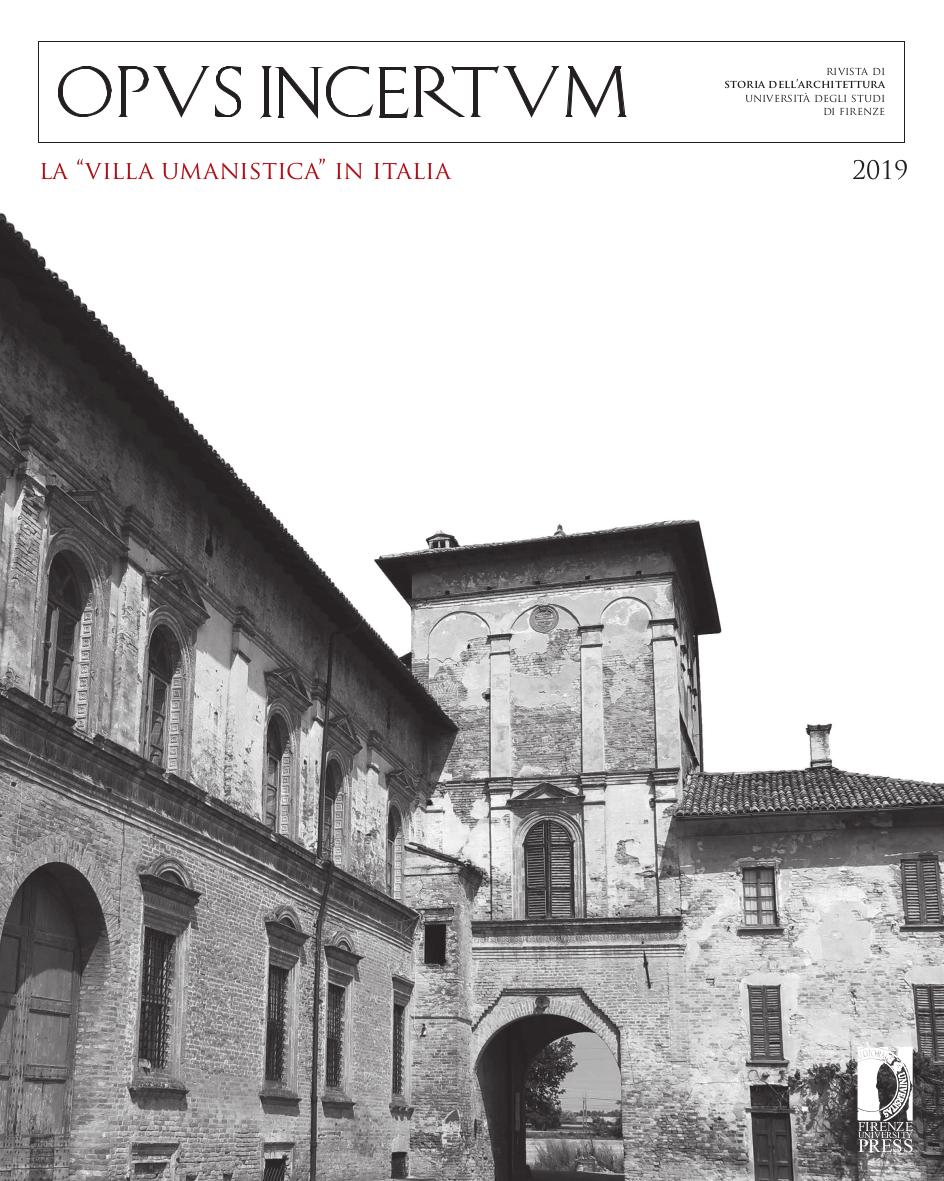La Casina dei vescovi di Tuscolo sulla via Appia. Modelli e committenti di una “residenza umanistica” suburbana a Roma nel Quattrocento
Published 2019-12-18
Keywords
- Villa, 15th century architecture, Rome, via Appia antica, cardinal Bessarione
How to Cite
Abstract
Traditionally ascribed to Bessarion’s patronage as bishop of Tusculum from 1448 to 1468, the Casina on the Via Appia is one of the earliest suburban residences in Rome which is an expression of humanistic culture. As the outcome of the restoration of the Medieval hospital of the church of San Cesareo de Appia, which had been built on Roman ruins, this villa is characterized by the coexistence of elements related to late-Medieval legacy with architectural details and parts made ‘in the manner of the Ancients’. Some distributional aspects are, indeed, strictly related to the Roman way of life, as it is described in Roman writers’ literary works. Whether the latest studies confirm Bessarion’s role in the construction of the building, it is still controversial to identify the renovation works accomplished by him. In fact, they could also be attributed to his successors as bishop of Tusculum, above all the Venetian cardinal Giovanni Battista Zeno from 1479 to 1501. The purpose of this article is to outline the architectural interventions made during the 15th century, integrating the latest results of documentary and archaeological research on the Casina with an analysis of literary references, antique monuments and contemporary buildings taken into account by its patrons.


